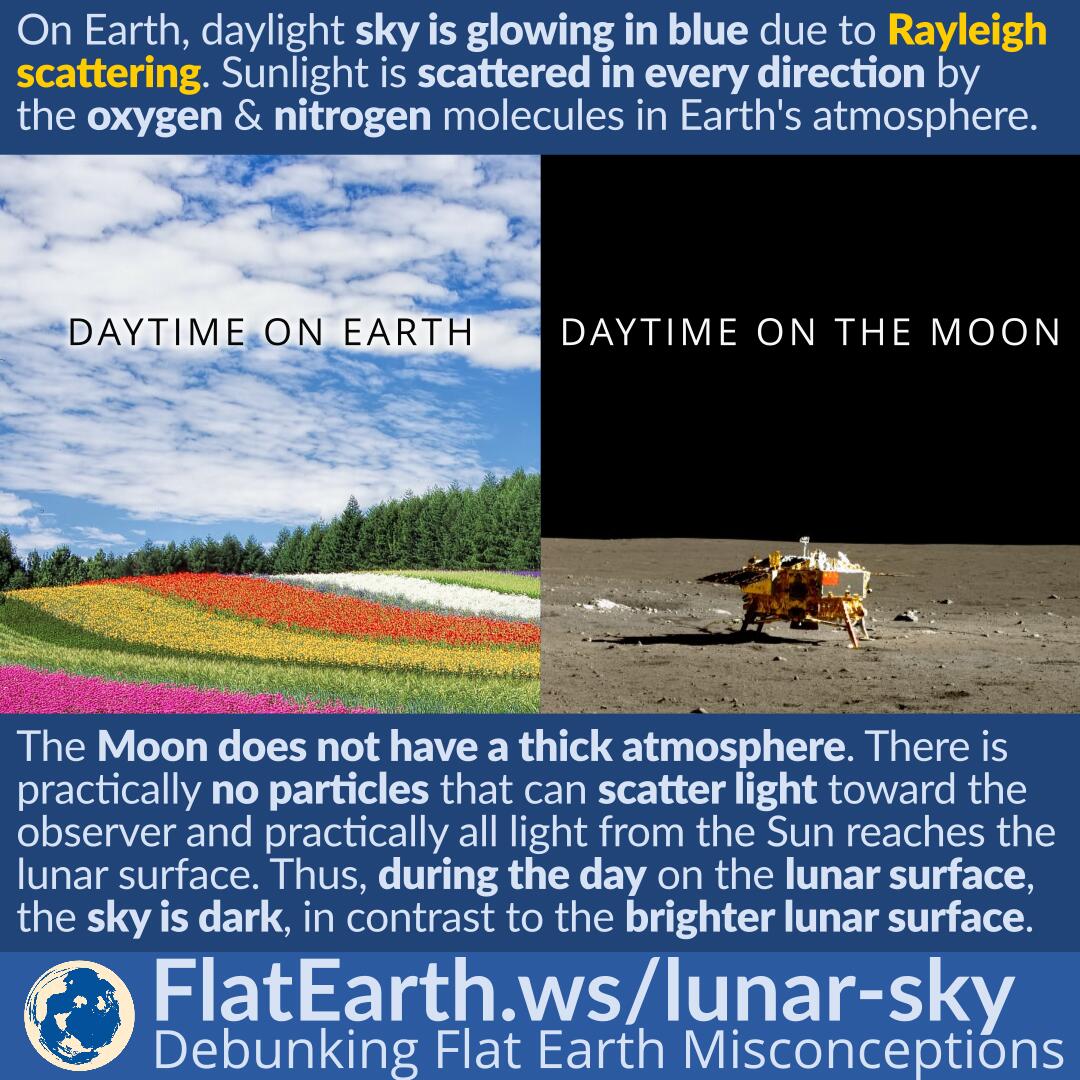On Earth, daylight sky is glowing in bright blue due to Rayleigh scattering. Sunlight is scattered in every direction by the oxygen and nitrogen molecules in Earth’s atmosphere.
Such the phenomenon does not happen on the Moon, causing the dark sky of the Moon. Flat-Earthers claim that the dark sky of the Moon captured by photos and videos taken from the Moon are “proof” there is misconduct. They are wrong. Just because Earth’s sky is bright blue, it does not mean it will be like that on the Moon and other planets.
The Moon does not have a thick atmosphere. There is practically no particle in the atmosphere that can scatter light toward the observer. Practically all light from the Sun reaches the lunar surface without being scattered. Thus, during the day on the lunar surface, the sky is dark, in contrast to the brighter lunar surface.
Other planets that possess a significant atmosphere also have the same scattering phenomenon, like Venus or Mars, although with different scattering characteristics due to the different atmospheric composition.
The Lack of Stars in the Dark Moon Sky
The “problem” with the lack of stars in the lunar sky is covered here: The Lack of Stars in the Pictures of Space
Illustration
The illustration is the Chang’e 3 lander, taken from the Yutu rover which is one of its payloads. Chang’e is a series of lunar exploration missions from China.
References
- Rayleigh Scattering – Wikipedia
- Extraterrestrial Skies – Wikipedia


